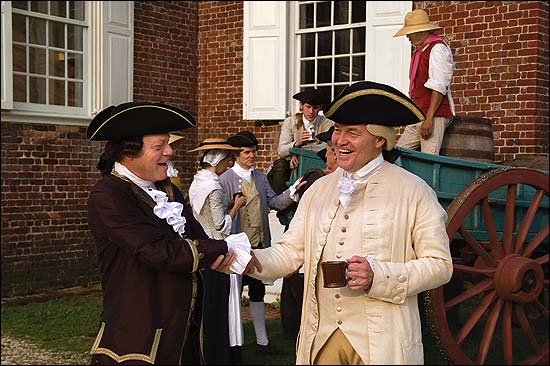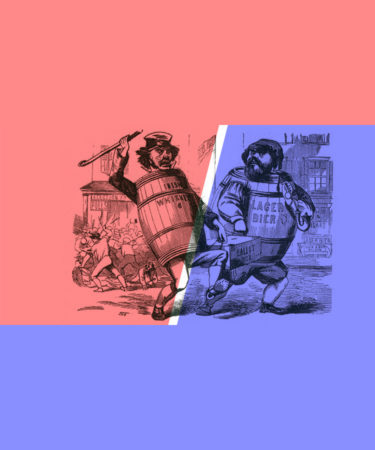For a variety of reasons — email scandals, Bernie blues, orange cotton candy hair and the brain sitting beneath it — more than a few voters might be tipsy in the voting booth this year. Even if we choose to go the responsible route and vote soberly, we’ll probably find our way to the nearest liquor store to drown our electoral sorrows in some all-American hooch.
Turns out this isn’t a new phenomenon. The sadness and psychological rage, maybe, but the concept of coupling drinking and voting? That’s been around longer than the country itself. Really, however much booze is consumed to grease political wheels in D.C. power-player watering holes —and we shudder to imagine lobbyists knocking back $2,000 bottles of wine — that’s nothing compared to the way early American political candidates would use alcohol to essentially buy votes from the electorate. Maybe “buy” isn’t the right term. It was more like a little friendly elbow nudge, with booze. They even had a nickname for the practice. Well, two, actually: “treating,” or “swilling the planters with bumbo,” aka rum.
It seems counterintuitive to get your electorate nice and sauced before it votes, especially back in the day, when we can only imagine voting involved lighting candles or dripping hot wax onto a parchment. But it actually made some sense. For one thing, in Colonial times, voting day was really a day. You weren’t just leaving work two hours early to head to some fluorescent-lit community center polling place. You were traveling, often by arduous means, to a distant town center where voting was centralized for a township. Given the physical exertion, and the fact that a generally scattered community was actually coming together, it seemed natural (even festive) to serve some light refreshment. Yes, even alcoholic refreshment.

And we should bear in mind that colonials drank more than we do, “more than twice as much hard liquor” than the average modern American, according to historian Dennis Pogue. Serving cider or rum at a polling place wasn’t necessarily an invitation to mayhem. It did, however, become an easy way for candidates to influence the vote, and the equation was fairly simple: serve more booze, earn more votes. In fact, it was so customary, if you didn’t serve alcohol you were almost guaranteed a loss. Robert Dinkin, author of “Campaigning in America: A History of Election Practices,” notes that “if a candidate ignored the custom of treating, he often found himself in great difficulty.”
And that’s exactly what happened to none other than George Washington, our cherry tree-hating, momentous river-crossing, marvelously resting bitch face-having first President. Except it wasn’t the presidential election. It was back in 1755, when a 24-year-old Washington was running for the House of Burgesses (essentially the Virginia state legislature). He knew of the practice of treating and adamantly objected, having already complained to the governor that local Commonwealth bars rendered his soldiers “incessantly drunk and unfit for service.”
So Washington says no to bumbo, and loses the election. Hard. As in his opponent gets 271 votes and he gets a mere 40. Fast-forward three years, and Washington runs again. Not only has he changed his mind about treating, Washington goes out of his way to serve 144 gallons of alcohol (rum, punch, hard cider, and beer), or roughly half a gallon per vote of the whopping 331 votes that won him the election, according to historian Daniel Okrent. In fact, Washington had done such a 180, he was actually concerned he hadn’t served enough booze. As he wrote to his campaign manager, James Wood, he hoped they hadn’t “spent with too sparing a hand.” Kind of like when you’re throwing a party and you’re wondering how much of a booze baseline you need to shell out for, except that party is America.
Washington wasn’t the only important statesman, and eventual president, who initially refused to engage in treating. According to Dinkin, when James Madison tried to campaign in 1777 “without ’the corrupting influence of spiritous liquors, and other treats,’ he lost to a less principled opponent.” By the time he was elected president in 1808, we have to assume he’d learned his lesson.
Voting laws eventually evolved to end treating. In 1811, Maryland passed the first campaign finance reform law ever, “[prohibiting] candidates from purchasing alcohol for voters.” Over time, states also began to ban the sale of alcohol on Election Day itself. Most have since dropped that practice, though not necessarily because our prospects have gotten any better. We’re just guessing states need that Election Day hooch revenue.
